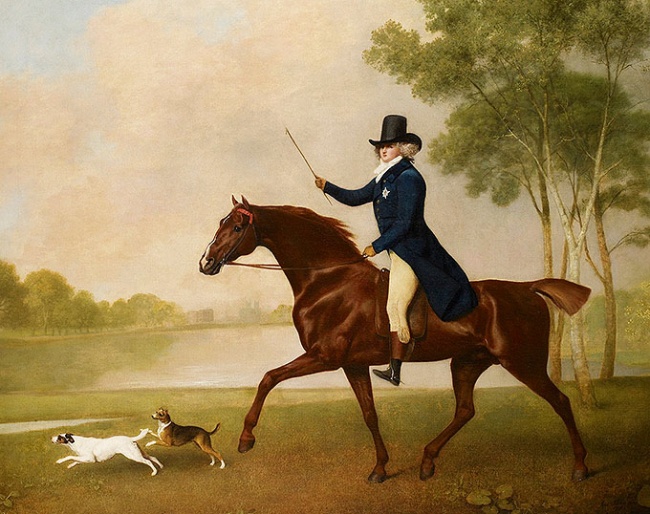
White breeches are part of an important tradition of the design of riding clothes and elaborate rules for dress exist in all FEI disciplines. Every item of apparel, down to colour scheme, is precisely regulated.
Wearing white pants when riding horses was a way to show off status in the 1800s as the formal attire associated with affluent riders.
Two explanations can be found in history for the predominant use of the colour white for riding, tracing back to fox-hunting and polo.
Fox-Hunting Tradition
Robin Brueckmann, an American Grade IV Para-Dressage rider, posted on Facebook:
"Our attire descends from English hunting togs. Back in the day, breeches were made of deerskin. No, not patches, the whole thing. This was practical for winter hunting. Then, there were no dry cleaners. You sent your deerskin breeches to the fuller, who cleaned them by scrubbing them with fuller’s earth. What’s that, you say? Why, it’s kaolin clay, the same stuff that we use as poultice. It dries white: therefore breeches are white."
Polo Tradition
White breeches also find their origin in India where the Jodhpur pants or Jodhpurs were invented to play polo more comfortably. They are always worn over close-fitting ankle-high jodphur boots, or paddock boots, and the colour white was preferred to reflects the hot rays from the sun.
In the late 1800s, Sir Pratap Singh , the Maharaja of Idar and the Regent of Jodhpur , who was an avid Polo player , was dissatisfied with the prevailing style of breeches and had a garment produced more suited to the needs of the game. He chose as his template the churidar but he increased the baggy aspect by flaring the garment along the thighs and hips. This allowed for their free movement while riding, a revolutionary design in the era before the invention of stretch fabrics.
The British under the rule of Queen Victoria, the Monarch of the United Kingdom of Great Britain and Ireland and the Empress of India, were quick to spot the advantages of the new design and quickly adopted them.